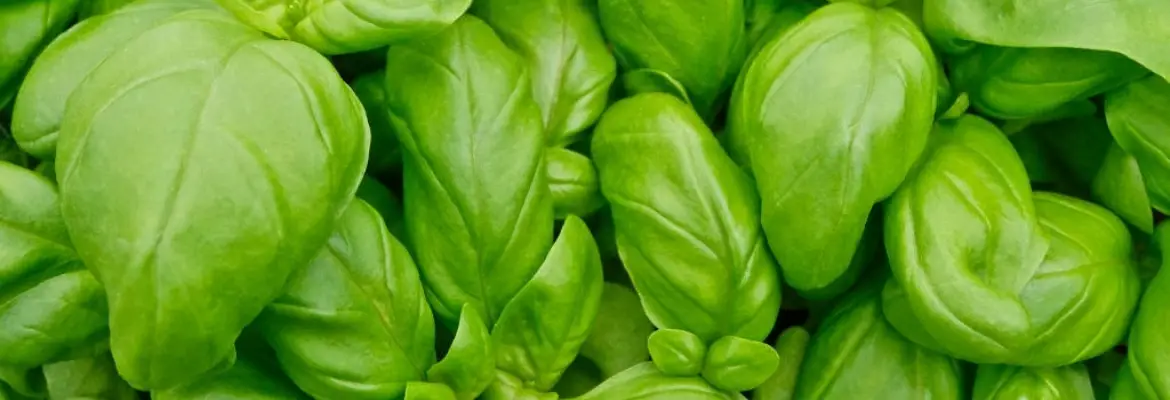Native to tropical regions of Central America and South East Asia, basil aka great basil is a culinary herb. There are different varieties of basil for e.g. Sweet basil, lemon basil, Thai basil, Holy basil etc.
Surface of a basil leaf is smooth, broad, and flat with prominent veining. Basil leaf edges range from serrated to jagged and the stems are fibrous and square.
Its aromatic qualities are enhanced by its high content of essential oils, which emit flavors such as anise, clove, cinnamon, and camphor.
Leaf size and appearance of basil leaves vary widely depending on the variety, but they average 3 to 11 centimeters in length and are oval to lanceolate in shape.

Scientific name of Basil
Ocimum Basilicum
Other names of Basil
- Albahaca
- Basilic
- Basilic grand
- Basilici herba
- Common basil
- Krishna tulsi
- Visva tulsi
- Surasa
Calories by source in Basil
- Calories by carbohydrate in Basil = 35%
- Calories by fat in Basil = 19%
- Calories by protein in Basil = 46%
Fats and Fatty Acid profile of Basil
- Polyunsaturated fat (PUFA) in Basil = 75%
- Saturated fat (SF) in Basil = 8%
- Monounsaturated fat (MUFA) in Basil = 17%
Nutrition facts of Basil
*Serving size = 100 grams = 3.55 Ounces = 1/2 cup
*DV= % Daily Value (%DV indicates how much nutrients contribute to a person’s daily diet from a serving of a food. DV assists you in determining whether or not a serving of food is high or low in a particular nutrient.)
| Nutrient | Amount | Unit | DV |
|---|---|---|---|
| Calories | 23 | KCAL | |
| Fat | 0.64 | GRAM | 1% |
| Protein | 3.15 | GRAM | 6% |
| Carbohydrate | 2.65 | GRAM | 1% |
Detailed vitamin profile of basil, vitamin A, vitamin B12, vitamin B6, vitamin C, vitamin D, Folate, Niacin, Thiamin, and Riboflavin is shown in the chart.
Detailed mineral profile of basil, Sodium(Na), Calcium(Ca), Copper(Cu), Iron(Fe), Magnesium(Mg), Selenium(Se), Phosphorus(P), Potassium(K) and Zinc(Zn) is shown in the chart.
Check freshness in Basil
- Avoid limp and blackish colored leaves
- Old basil will have a moist texture
Availability of Basil
- Generally available round the year
How to store Basil
- Storing basil bouquet at room temperature is recommended
- If planning to store the basil in refrigerator, make sure the leaves are dry and store them in a plastic bag.
Complete nutrition facts of Basil
Click on the link HERE to download high quality, high resolution and print ready PDF version of the Basil nutrition chart/infographic.


